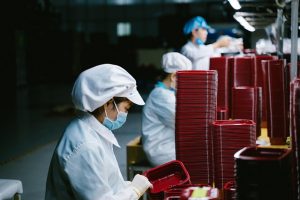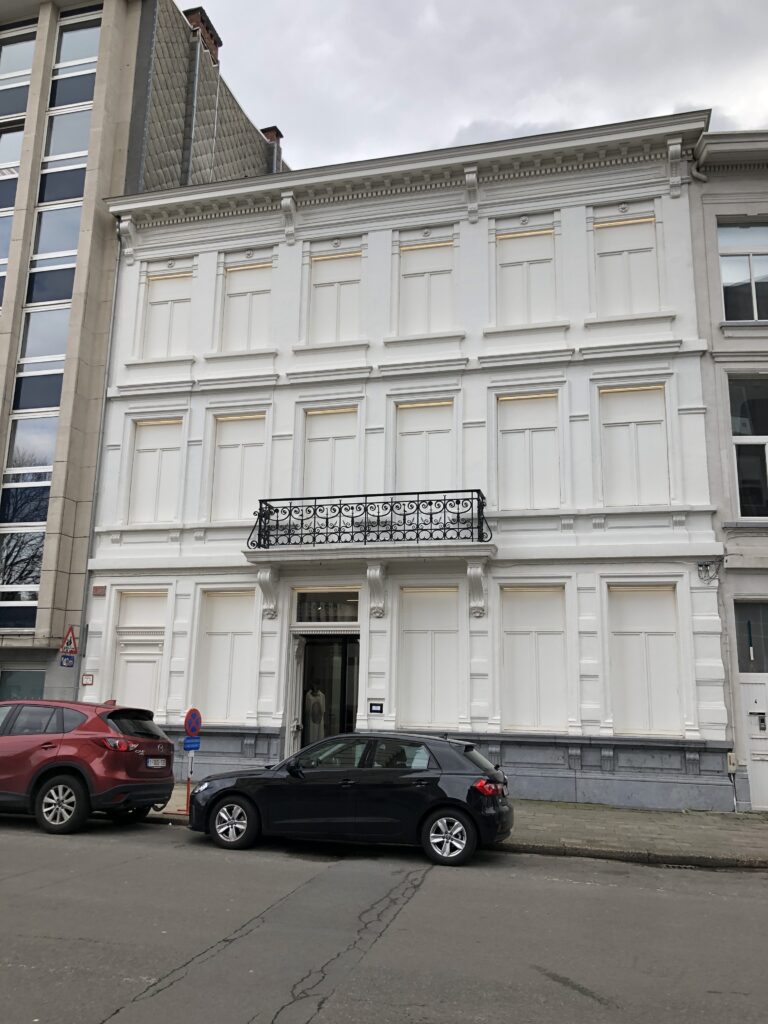By Yvonne Chua
- Name a unique way that tech will impact the ecommerce space in ways that people haven’t realized. The more compelling, the better.
Moving a physical showcase of garments to an online model requires careful attention. When something is online, the users will have expectations inline with the best in class online experience. It requires a lot of coordination and considerations on the implicit behaviour of consumers which can be challenging to visualise. When we shop in an ecommerce space, we process our orders with a few clicks, and almost magically, a parcel appears on our front door a few days later.
A unique way that tech will impact the ecommerce space is the increase in warehouse robotics to support the industry. As more and more ecommerce orders are placed, there comes a point where the brands operating their own warehouse will not be able to keep up the demands to fulfill the orders, as well as sort through the returns in an organised manner. Here comes warehouse robotics.
By 2022, it is predicted that investments in robotic process automatic (RPA) will reach $3 billion.Today, there are already 3,200 fulfilment centres in the world that adopt it. Whilst there is fear in the decline of bricks and mortar stores, beyond what we see today on ecommerce sites are the vast warehouses that fulfil our orders. It is in these warehouses that tech will largely impact the industry, by enabling efficient workflow through automation, ensuring the accuracy of orders, and round the clock work to meet the orders at an unprecedented speed.
- Describe 2-3 ecomm predictions you see happening in 2021.
My prediction for 2021 is a focus in slow fashion, an appreciation in design and craftsmanship. The movement began pre-COVID but it was heightened during the pandemic, and I believe it will stay for the long term. As an extension to it, bricks and mortar retail stores will also reflect the same appreciation in design and craftsmanship. From the materials selected and the craft that goes into realising a retail space, brands will become more conscious, adopting design thinking for retail spaces that is aligned with the fashion they represent.
A second prediction, related to the above, is a rise of made-to-order items. Made-to-order or pre-order items are only manufactured when a consumer indicates that they are purchasing the product, thereby eliminating abundance of stock which brands then have to offload via a sale, or worse, in landfills. As consumers are conscious of the environmental impact of fast fashion, as well as the conditions of some of the factories producing garments to supply fast fashion, many are rethinking priorities and thoughtfully considering how they are supporting the organisations when they are making a purchase. 87% of consumers agreed that they would be more likely to buy from a brand that offered a social or environmental benefit.
- What is the biggest risk for retailers right now that they are not realizing?
From an architect’s perspective, the biggest risk for retailers is in losing engagement from potential buyers in physical retail space, especially post-COVID. In recent years, there has been a huge shift on the purpose of retail space, especially flagships in cities where each retail space represents so much more than a place to make a purchase. It is about the brand, the brand’s design thinking and aesthetic which translates all the way to details such as the door handle in the changing area, the service, and the story that an excellent customer service representative can convey to potential buyers. As there is a significant fall in foot flow predicted, retailers must adapt and innovate by rethinking that purpose of each retail space. For example, is it possible to
convey the same message in a 5,000 sq ft space instead of a 10,000 sq ft space? Perhaps storage can be placed off-site and delivered directly to the purchaser. Can you spatially achieve more with less?
- What can we learn from supply chain disruption post- COVID?
Post-COVID, we have started to see and hear the voices of our local independent shops. During the lockdown, the baker that continued to serve bread to the local community, the pharmacy that continued to operate daily, and more – thank you. Something we can learn from this disruption is the value of our neighbourhood shops, supporting our local businesses and community.
- How can retailers move forward?
Retailers can move forward by showing up with an open mind to adapt to the changing needs and desires moving forward, thoroughly reflect their brand’s core values in both garments as well as the design and execution of the retail stores, and lastly, by listening to the consumers.
About the author
 Yvonne Chua is a London-based Chartered Architect and Co-founder of Pitch Your Concepts by Vonitto Ltd, a pitch submission platform for property owners and developers to find professional service for property renovations and developments. Previously worked at leading architecture and interiors studios on high-end retail, hospitality, and residential developments. Yvonne has a keen interest in proptech (property technology), heritage buildings, branding, and art.
Yvonne Chua is a London-based Chartered Architect and Co-founder of Pitch Your Concepts by Vonitto Ltd, a pitch submission platform for property owners and developers to find professional service for property renovations and developments. Previously worked at leading architecture and interiors studios on high-end retail, hospitality, and residential developments. Yvonne has a keen interest in proptech (property technology), heritage buildings, branding, and art.
Related Articles

Hexnode CEO on how the “Holiday Illusion” is Masking the Risks of Retail’s Seasonal Workforce
The danger of seasonal hires is magnified not just by who is accessing the network, but when they are doing it. Sophisticated threat actors possess a deep understanding of the retail operational calendar.

The New Frugality: How Inflation and Tariffs Are Reshaping Consumer Spending
One of the most telling shifts is how shoppers approach decision-making. Where convenience once dominated, consciousness now plays a larger role. People are researching more before making a purchase, comparing prices across multiple platforms, and questioning whether they really need the product in the first place.

Embracing new concepts vs the return to brick-and-mortar
Balancing the return to physical retail and the development of new technologies to enhance customer experience and drive operational efficiency for long-term success.
Enartis to Acquire Parsec in Winemaking and Retail Deal
The deal will bring Enartis and Parsec together to help wineries manage every part of production more easily and efficiently, from grape to bottle.


 for the latest news and job opportunities in retail tech
for the latest news and job opportunities in retail tech 